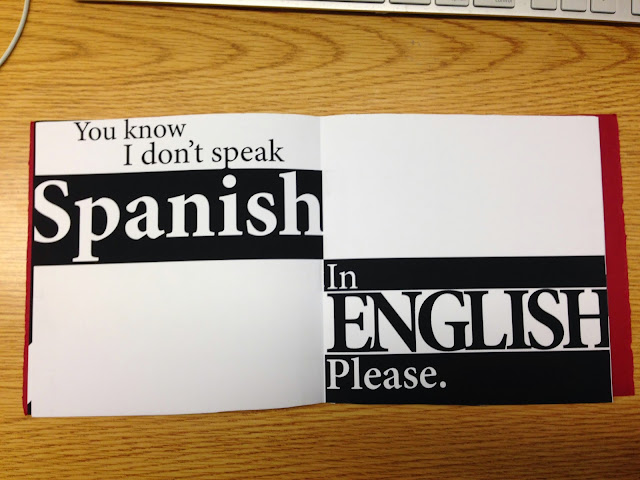On September 11th, we went to an event at Thaddeus Stevens College of Technology.
The event was about letterpress printing, which is a craft that has become less practical and less utilized since the creation of digital printers.
We started the event by covering the history of typography and the printing press. Then, we started working on creating our own note pads. It was interesting to be able to see what a type case looked like visually and to see how the upper and lower cases related to how the terms are used today. It would definitely be tedious to have to organize all of the letters in the type case to be sure that they are in the right place. What’s also interesting was learning about the amount of type cases that would be present at certain companies. Some newspaper companies would have entire floors filled with all of the numerous type cases containing different fonts.
We were shown how to place and organize the letters so that they would stay in place with the addition of spacers to prepare them for the letterpress. I chose to create my name. It had to be created backwards.
Although we weren’t able to choose which font we got, I received a sans-serif which I was happy with. It looked like Futura, but I can’t remember whether or not that is what it was. We then were shown how to apply ink to our name to test it.
After that, we were taken in to the letterpress room to start creating the individual pages of our notepad. I chose to use white paper with red ink. It was interesting how loud the room became with only four or five letterpresses working at once. It was time-consuming to create only a small notepad, but the effect that the letterpress created by imprinting the shape of the letters into the paper created a very artistic effect that isn’t possibly with inkjet printers. I would have enjoyed seeing decorative type created with the letterpress, much like how they are shown on formal invitations. Overall, my notepad turned out quite well.
At the end of the event, we had to move the type cases back into their shelves.
The event certainly gave me a new appreciation for typography and the practice of letterpress printing. It would be great if there were a way to letter press print without having to manually create it every time. The imprint of the type is beautiful and would look great on posters, magazines, and even research papers.
We also “liked” the .918 Club on Facebook, which is a non-profit organization in Lancaster City devoted to keeping the practice of letter press printing active and educating and involving those who are interested in it.
The event was about letterpress printing, which is a craft that has become less practical and less utilized since the creation of digital printers.
We started the event by covering the history of typography and the printing press. Then, we started working on creating our own note pads. It was interesting to be able to see what a type case looked like visually and to see how the upper and lower cases related to how the terms are used today. It would definitely be tedious to have to organize all of the letters in the type case to be sure that they are in the right place. What’s also interesting was learning about the amount of type cases that would be present at certain companies. Some newspaper companies would have entire floors filled with all of the numerous type cases containing different fonts.
We were shown how to place and organize the letters so that they would stay in place with the addition of spacers to prepare them for the letterpress. I chose to create my name. It had to be created backwards.
Although we weren’t able to choose which font we got, I received a sans-serif which I was happy with. It looked like Futura, but I can’t remember whether or not that is what it was. We then were shown how to apply ink to our name to test it.
After that, we were taken in to the letterpress room to start creating the individual pages of our notepad. I chose to use white paper with red ink. It was interesting how loud the room became with only four or five letterpresses working at once. It was time-consuming to create only a small notepad, but the effect that the letterpress created by imprinting the shape of the letters into the paper created a very artistic effect that isn’t possibly with inkjet printers. I would have enjoyed seeing decorative type created with the letterpress, much like how they are shown on formal invitations. Overall, my notepad turned out quite well.
At the end of the event, we had to move the type cases back into their shelves.
The event certainly gave me a new appreciation for typography and the practice of letterpress printing. It would be great if there were a way to letter press print without having to manually create it every time. The imprint of the type is beautiful and would look great on posters, magazines, and even research papers.
We also “liked” the .918 Club on Facebook, which is a non-profit organization in Lancaster City devoted to keeping the practice of letter press printing active and educating and involving those who are interested in it.
Below is a picture showing how my notepad looked after it was completed. The angle of it helps to show the slight imprint from the weight of the letterpress.


























